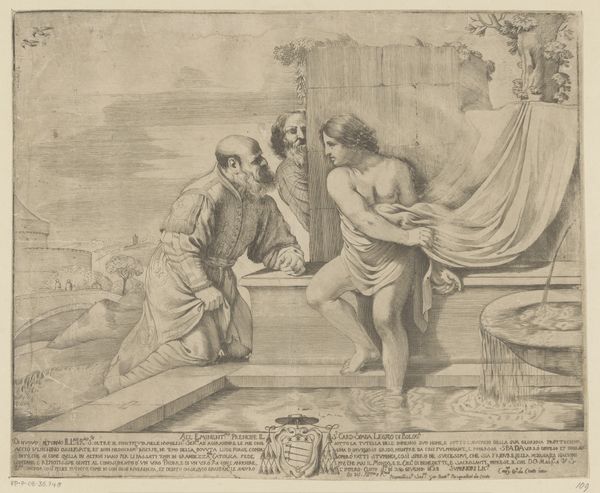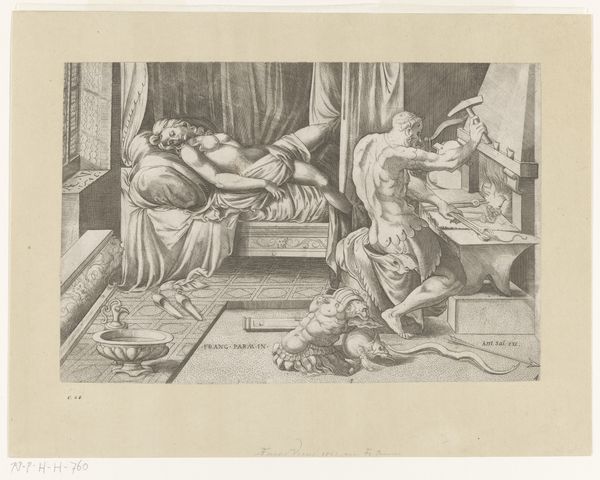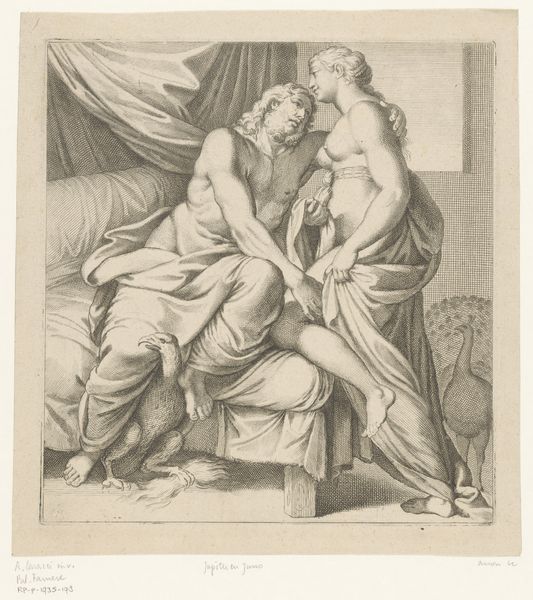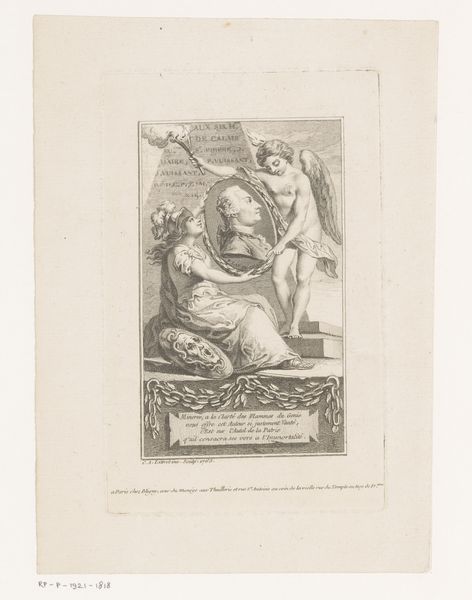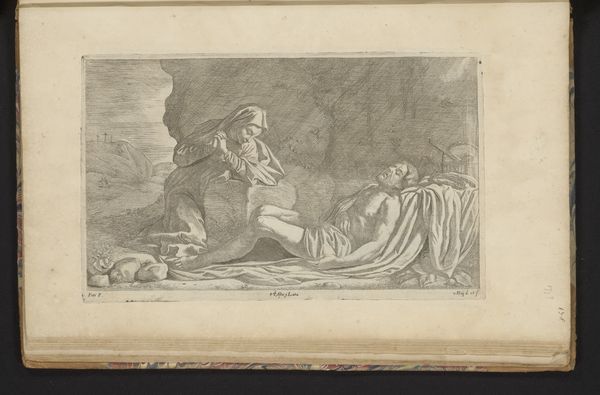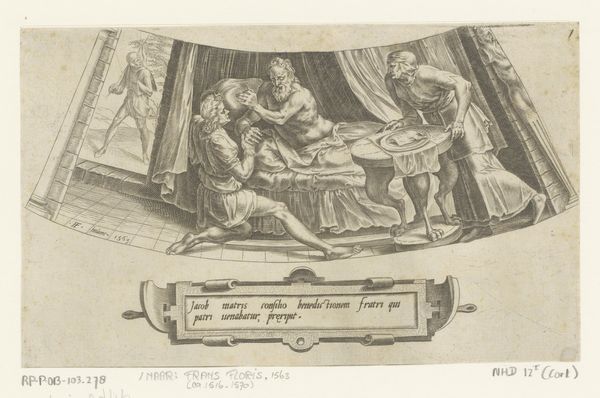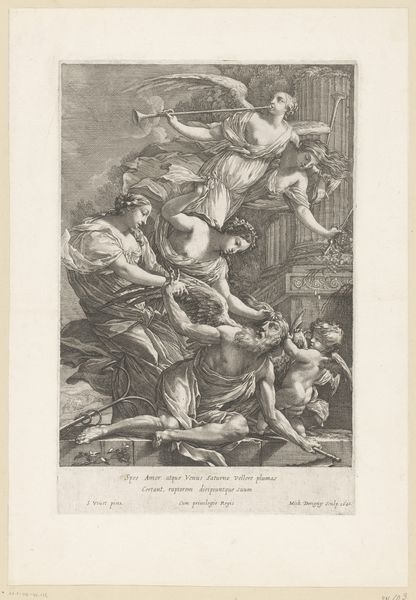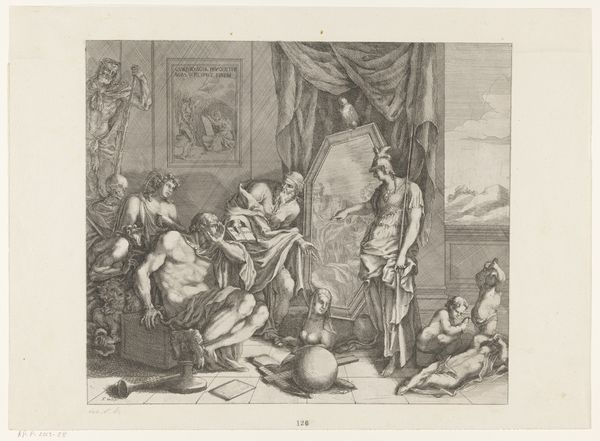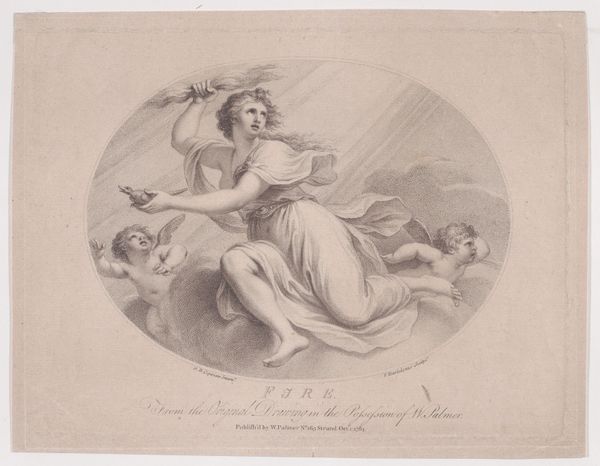
print, engraving
#
baroque
# print
#
old engraving style
#
classical-realism
#
figuration
#
form
#
line
#
history-painting
#
engraving
Dimensions: height 274 mm, width 349 mm
Copyright: Rijks Museum: Open Domain
Giovanni Battista Pasqualini created this engraving, Jupiter and Semele, sometime between 1585 and 1634. Pasqualini's print depicts a scene from classical mythology, Jupiter revealing his divine form to Semele, a mortal woman. As an Italian printmaker during the Counter-Reformation, Pasqualini was inevitably shaped by the religious and political climate of his time. The visual codes of the image, such as the dramatic gestures and use of light and shadow, demonstrate the influence of the baroque style, which the Catholic Church promoted to inspire religious devotion. The story itself, the dangers of mortal ambition, would have been well known at this time and the artist draws on this shared knowledge. Understanding Pasqualini's world requires delving into the history of the printmaking industry, the role of religious institutions in shaping artistic production, and the circulation of classical stories in early modern Europe. It reminds us that art always speaks from a particular place and time.
Comments
No comments
Be the first to comment and join the conversation on the ultimate creative platform.
